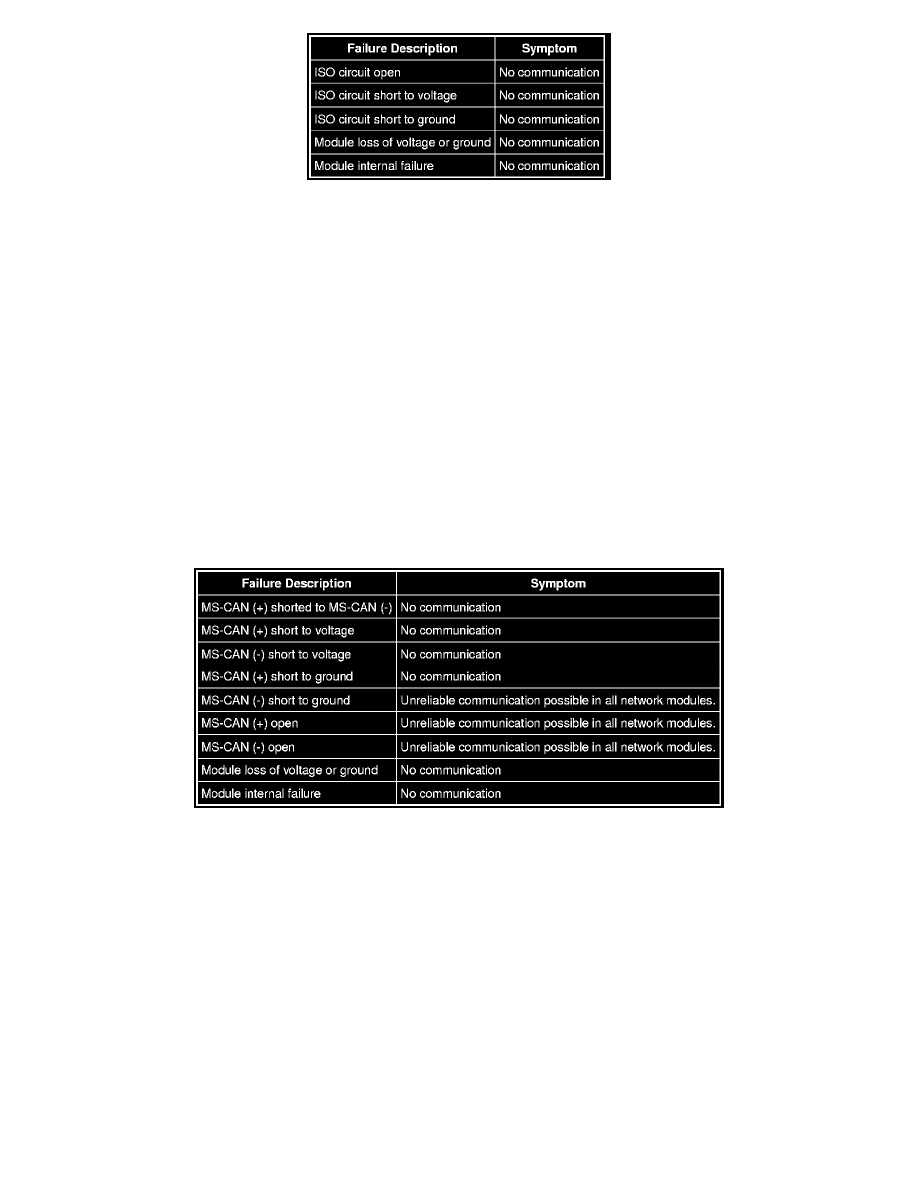F 250 2WD Super Duty V10-6.8L (2009)

ISO 9141 Network Communication Fault Chart
Medium Speed Controller Area Network (MS-CAN)
The MS-CAN uses an unshielded twisted pair cable of data (+) and data (-) circuits. The data (+) and the data (-) circuits are each regulated to
approximately 2.5 volts during neutral or rested network traffic. As bus messages are sent on the data (+) circuit, voltage is increased by approximately
1.0 volt. Inversely, the data (-) circuit is reduced by approximately 1.0 volt when a bus message is sent. Multiple bus messages can be sent over the
MS-CAN circuits allowing multiple modules to communicate with each other for general information transfer.
The MS-CAN will not communicate while certain faults are present, but will operate with diminished performance with other faults present. The
MS-CAN bus may remain operational when 1 of the 2 termination resistors are not present. The MS-CAN operates at a maximum data transfer speed of
125 Kbps for bus messages and designed for general information transfer.
In the event that one of the 2 network circuits (MS-CAN + or MS-CAN -) becomes open to a module on the network, unreliable network communication
to all modules on the network may result. The module to which the network circuit is open may repeatedly send network messages indicating there has
been partial data received. This type of message is referred to as a Negative-Acknowledge (NACK) message. Repeated NACK messages may "load" the
network with too much activity causing intermittent no communication to other network modules and/or the scan tool.
The following fault chart describes the specific MS-CAN failures and their resulting symptom:
MS-CAN Communication Fault Chart
MS-CAN Communication Fault Chart
High Speed Controller Area Network (HS-CAN)
The HS-CAN uses an unshielded twisted pair cable of data (+) and data (-) circuits. The data (+) and the data (-) circuits are each regulated to
approximately 2.5 volts during neutral or rested network traffic. As bus messages are sent on the data (+) circuit, voltage is increased by approximately
1.0 volt. Inversely, the data (-) circuit is reduced by approximately 1.0 volt when a bus message is sent. Multiple bus messages can be sent over the
network HS-CAN circuits allowing multiple modules to communicate with each other for real time information transfer and control.
The HS-CAN will not communicate while certain faults are present, but will operate with diminished performance with other faults present. The
HS-CAN bus may remain operational when 1 of the 2 termination resistors are not present. The HS-CAN operates at a maximum data transfer speed of
500 Kbps and is designed for real time information transfer and control.
In the event that 1 of the 2 network circuits (HS-CAN + or HS-CAN -) becomes open to a module on the network, unreliable network communication to
all modules on the network may result. The module to which the network circuit is open may repeatedly send network messages indicating there has been
partial data received. This type of message is referred to as a Negative-Acknowledge (NACK) message. Repeated NACK messages may "load" the
network with too much activity causing intermittent no communication to other network modules and/or the scan tool.
The following fault chart describes the specific HS-CAN failures and their resulting symptom:
